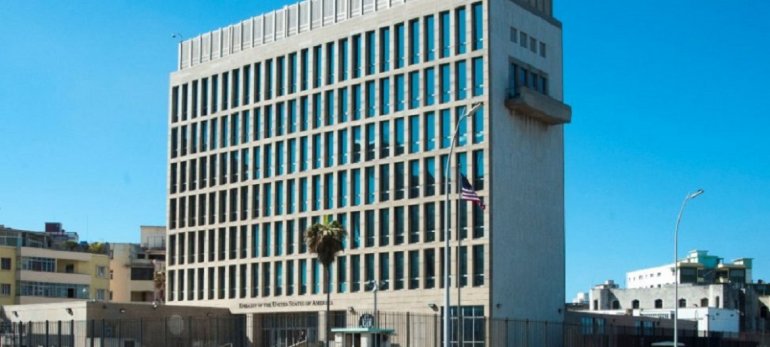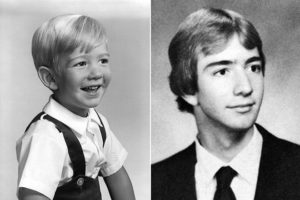
CUBA AMONG THE COUNTRIES THAT HAVE RECEIVED FROM THE US MORE PERMANENT RESIDENCES.
Since 2013, more than 280,000 Cubans have managed to adjust their status as permanent residents in the US, which could exclude Cuba from the Visa Lottery, which will announce its next call this month.
Cuba is among the six countries with the largest number of permanent residences granted in the United States during the last decade and the figures of this fiscal year point to a historical record that would endanger the inclusion of Cuban citizens in the State Department’s Visa Lottery, according to official statistics. Only last fiscal year, 65,097 Cubans obtained legal status in the United States, only exceeded by nationals of Mexico (170,952) and China (74,194), and above India (60,525), the Dominican Republic (58,560) and the Philippines (49,134) And the 19,047 adjustments of status to Cubans in the first quarter of 2018 are an indicator of the spiraling growth that can be seen at the end of the current fiscal period, on September 30.
All countries whose nationals count as the most favored with permanent residences have been excluded from the US Visa Lottery for years, except Cuba. The applications for legal residence by Cubans soared after the avalanche to the United States that generated the immigration reform implemented by Raúl Castro in 2013. The measure facilitated national citizens to travel abroad without requesting a special government permit (the so-called white card) and allowed Cubans to stay abroad for 24 months without losing their legal powers in the country.
Thus, there was the exorbitant growth in irregular arrivals at border points and sea voyages across the Straits of Florida. In just five years until the repeal of the dry feet / wet feet decree, in January 2017, 115,000 Cubans entered through the Mexican border and received parole to legalize their status under the Cuban Adjustment Act (CAA). At the same time, figures from the Ministry of Foreign Affairs of Cuba (MINREX) report two million 72 thousand trips of Cubans abroad until last April, mostly to the United States.
In fact, Cuba could be eliminated from the visa lottery when the DV-2020 draw is announced, which will open in early October. In the recent fiscal periods (2013-2017), a total of 264,807 Cubans received legal residency in the US.
The State Department declined to answer whether Cuba will be among the eligible countries for the next visa lottery (DV-2020).
However, a technicality in the adjustment of legal status may favor Cubans, according to experts on the subject of migration. The statistics regularly taken into account by the State Department to exclude countries with 50,000 of their nationals admitted to the US are those processed under the Immigration and Nationality Act (INA), in effect since 1952, without considering that in the case of Cubans, most residences are compiled by the CAA.
“Cubans have been privileged because of this special condition and probably their stay in the Visa Lottery will not be affected in the short term,” said Willy Allen, an immigration attorney in Miami. Allen predicted that at the end of this fiscal year, the number of residences granted to Cubans will surpass 70 thousand, considering that in this period the requests of Cubans admitted between 2016 and 2017 are being processed, a figure that exceeds 90 thousand.
Since 2005, the requests are made only through the Internet, which hinders the flow of requests from the island due to connectivity problems. However, thousands of Cubans appeal to relatives and friends abroad to complete and submit the application form in the computerized random drawing.
The increase in applications from Cubans in the Visa Lottery has been remarkable in recent years. The most recent sweepstakes participation statistics -corresponding to 2018- indicate that 114,560 Cuban citizens (including principal applicant and other members of the nuclear family) competed for a ticket to emigrate to the United States. The record of applications occurred in 2016, with 362,368 Cuban aspirants.
 CUBA ENTRE LOS PAÍSES QUE HAN RECIBIDO DE EEUU MÁS RESIDENCIAS PERMANENTES.
CUBA ENTRE LOS PAÍSES QUE HAN RECIBIDO DE EEUU MÁS RESIDENCIAS PERMANENTES.
Desde 2013, más de 280 mil cubanos han logrado ajustar su estatus como residentes permanentes en EEUU, lo que pudiera excluir a Cuba de la Lotería de Visas, que anunciará su próxima convocatoria este mes.
Cuba figura entre los seis países con mayor cantidad de residencias permanentes otorgadas en Estados Unidos durante la última década y las cifras del presente año fiscal apuntan a un récord histórico que haría peligrar la inclusión de ciudadanos cubanos en la Lotería de Visas del Departamento de Estado, según estadísticas oficiales. Solo en el pasado año fiscal, 65,097 cubanos obtuvieron estatus legal en territorio estadounidense, solo superados por nacionales de México (170,952) y China (74,194), y por encima de India (60,525), República Dominicana (58,560) y Filipinas (49,134).Y los 19,047 ajustes de estatus a cubanos en el primer trimestre del 2018 son un indicador del crecimiento en espiral que se vislumbra al término del actual período fiscal, el próximo 30 de septiembre.
Todos los países cuyos nacionales cuentan como los más favorecidos con residencias permanentes están excluidos desde hace años de la Lotería de Visas de EEUU, excepto Cuba. Las solicitudes de residencia legal por cubanos se dispararon tras la avalancha hacia Estados Unidos que generó la reforma migratoria implementada por Raúl Castro en 2013. La medida facilitó a los ciudadanos nacionales viajar al exterior sin solicitar un permiso especial del gobierno (la llamada tarjeta blanca) y permitió a los cubanos permanecer por 24 meses en el extranjero sin perder sus atribuciones legales en el país.
Fue así que se produjo el crecimiento exorbitante en las llegadas irregulares por los puntos fronterizos y de los viajes marítimos a través del estrecho de la Florida. En apenas cinco años hasta la derogación del decreto de pies secos/pies mojados, en enero del 2017, 115 mil cubanos entraron por la frontera mexicana y recibieron parole para legalizar su estatus bajo la Ley de Ajuste Cubano (CAA). A la vez, cifras del Ministerio de Relaciones Exteriores de Cuba (MINREX) reportan dos millones 72 mil viajes de cubanos al exterior hasta el pasado abril, en su mayoría a Estados Unidos.
De hecho, Cuba podría quedar eliminada de la lotería de visas cuando se anuncie el sorteo de DV-2020, que abrirá a comienzos de octubre. En los recientes períodos fiscales (2013-2017), un total de 264,807 cubanos recibieron residencia legal en EEUU.
El Departamento de Estado declinó responder si Cuba figurará o no entre los países elegibles para la próxima lotería de visas (DV-2020).
Sin embargo, un tecnicismo en el ajuste de estatus legal pudiera favorecer a los cubanos, de acuerdo con expertos en el tema migratorio. Las estadísticas que regularmente ha tomado en cuenta el Departamento de Estado para excluir los países con 50,000 de sus nacionales admitidos en EEUU son las procesadas bajo la Ley de Inmigración y Nacionalidad (INA), vigente desde 1952, sin considerar que en el caso de los cubanos la mayoría de las residencias se compilan mediante la CAA.
“Los cubanos han sido privilegiados por esta condición especial y probablemente su permanencia en la Lotería de Visas no se afectará a corto plazo”, dijo Willy Allen, abogado de inmigración en Miami. Allen pronosticó que al término del presente año fiscal, la cifra de residencias otorgadas a cubanos sobrepasará las 70 mil, considerando que en este período están procesándose las solicitudes de los cubanos admitidos entre 2016 y 2017, una cifra que supera los 90 mil.
Desde 2005, las solicitudes se efectúan únicamente por internet, lo que dificulta el flujo de solicitudes desde la isla por los problemas de conectividad. No obstante, miles de cubanos apelan a familiares y amigos en el exterior para que completen y presenten la planilla de solicitud en el sorteo aleatorio computarizado.
El incremento de solicitudes de cubanos en la Lotería de Visas ha sido notable en los últimos años. Las más reciente estadísticas de participación en el sorteo -correspondientes a 2018- indican que 114,560 ciudadanos cubanos (incluyendo solicitante principal y otros miembros del núcleo familiar) concursaron por un boleto para emigrar a EEUU. El récord de solicitudes ocurrió en 2016, con 362,368 aspirantes cubanos.
Agencies/MartiNews/Wilfredo Cancio/ Extractos/ Internet Photos/ Arnoldo Varona/ TheCubanHistory.com
THE CUBAN HISTORY, HOLLYWOOD.






















